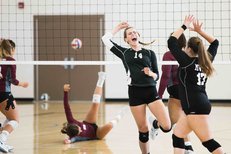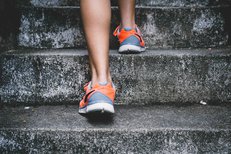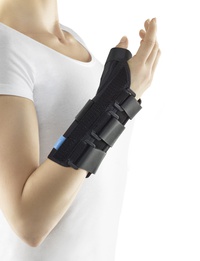Sports Injuries
This page details the origins, causes, symptoms, and treatment options for sports injuries.
What is a Sports Injury?
Anyone who exercises regularly tends to have a higher risk of injury. On this page, we will explain why Sports Injuries occur and how you can exercise regularly and safely.
Sports Injuries are injuries that occur during or directly after exercise. Here are some common sports injuries:
- Golfer's Arm
- Torn ligament
- Skier's Thumb
- Tennis Elbow
- Ruptured muscle fibre and capsule
- Bruises
- Pulled muscles
- Ankle sprains
- Luxations (dislocations) of the shoulder or knee
- Injuries to the Achilles tendon (Achilles tendon rupture or Achilles tendon inflammation)
- Fractures such as fatigue or nasal bone fractures
- Tooth and jaw injuries
This doesn't just affect professional and competitive athletes, but also people who exercise as a hobby (see Prevention). Injuries can occur in any kind of sport, not only in extreme sports like downhill mountain biking, boxing, or free climbing. There are many sports that are particularly popular with recreational athletes and that have a high risk of injury. These include all ball sports (football, basketball, handball, tennis, etc.), athletics (sprint, long jump, high jump, shot put, etc.) and winter sports (skiing, snowboarding, ice hockey, etc.). To prevent accidents in contact sports (sports with physical contact), participants have to be especially careful, because the opponent's behaviour has to be taken into account as well.

Causes
There are many different reasons why people get injured during exercise. Insufficient warm-up is undoubtedly one of the main reasons for sports injuries. This is because 'cold' muscles are much more prone to injury. A thorough warm-up ensures that more fluid is produced in the joints and that the muscles are better supplied with blood and oxygen prior to further exercise being attempted.
Tendons and ligaments also benefit from warming up, as they can then withstand much greater strain. Muscles that are well supplied with blood are also more elastic and do not become overly acidic during increased exertion. In contrast, 'cold' muscle fibres can tear much faster, which can lead to muscle soreness. It could even lead to overstretching, pulled muscles, torn muscle fibres, or an Achilles tendon injury.
Overconfidence can also lead to sports injuries. People can run the risk of injury by training incorrectly, overstraining their bodies or not allowing their bodies sufficient time to rest. If muscles, tendons, or ligaments are subjected to permanent overload, the risk of ruptures increases significantly.
Missing or inadequate equipment can also be a cause of injury. Shoes that are worn out or are of poor quality have little cushioning, which puts a lot of strain on the joints. In addition, shoes that do not fit properly can cause you to bend over more often (see Ankle Pain). This means that a firm stance, which is needed for many ball sports, is no longer guaranteed. Depending on the sport, comprehensive equipment may include good shoes, protective clothing, protectors, dental guards, and helmets.
Even those who prepare everything perfectly, warm up consistently, evaluate their performance realistically, and have the right training equipment are not immune to possible sports injuries. After all, not everyone trains alone. Contact sports can sometimes involve intense physical contact with opponents. In addition, there are always external dangers that can influence the likelihood of sports injuries such as training on uneven ground or in bad weather conditions.

Symptoms
As with any injury, sports injuries cause pain. The pain can be mild to severe depending on how bad the injury is, of course. In most cases, the injured tissue swells, heats up, reddens, and produces a bluish bruise (hematoma).
The injured area becomes extremely sensitive to touch. Mobility is severely restricted and the affected muscles can barely be put under load, or only under severe pain. For example, if a patient suffers from a severely torn outer ligament of the ankle joint, they can (usually) no longer walk at all and require external assistance in the form of crutches or two supporting arms. As such, patients are advised to visit a doctor as soon as possible if they experience any of the above.

Diagnosis
If a sports injury is not treated or if the injury is not properly resolved, it can lead to chronic pain. This often happens with professional athletes or when patients are very ambitious and return to training too soon. Because the injury is then not yet completely healed, the extreme strain caused by exercise is often too much.
With some sports injuries, the cause of the pain and the exact nature of the injury is obvious. Some examples include Skier's Thumb, Golfer's Arm, or Tennis Elbow. However, even in these cases, the only way to be sure is by obtaining a doctor's expert advice.
Examination by an orthopaedic surgeon may no longer be sufficient to determine whether the injury is a sprain, bruise, or torn ligament. In such cases, the doctor may order x-rays, ultrasound, computed tomography (CT), or magnetic resonance imaging (MRI).
However, it is important to remember that, although all the injuries mentioned in this article fall under the category of sports injuries, all of them can also occur in situations that aren't related to physical exercise. For example, Tennis Elbow or Golfer's Arm (both are forms of epicondylitis) do not only occur while playing tennis or golf but also increasingly affect the following job groups: office staff, craftspeople, waiters, musicians, and cashiers.
Prevention
Safety in exercise means suitable footwear, proper warming up of the muscles, and drinking enough water to compensate for the loss of fluid. In some types of sports, you can also protect yourself from your opponents or from the consequences of falling by wearing hand, elbow, knee, and shin guards.
As soon as you experience pain during exercise, you should stop immediately and take a break from sports for a while. This is the only way to prevent so-called fatigue injuries such as muscle and tendon irritation, joint pain, or the classic fatigue fracture.
Anyone who exercises regularly is recommended to purchase an emergency kit for quick first aid. It should contain the following:
- analgesic ointment
- painkillers
- standard band-aids in different sizes
- immobilization bandages
- gauze bandages
- triangular scarf
- cooling gel or ice packs

Non-operative treatment and primary care
First aid measures should be applied according to the PRICE rule (protection, rest, ice, compression, elevation). The affected area of the body should be elevated and dressed with a compression bandage to close injured blood vessels more quickly and thus counteract swelling. Nowadays, cooling with ice is controversial. If ice is used, it should never come into direct contact with the skin. Instead, wrap it in a cloth to prevent frostbite. Cooling the affected area should not exceed 20 minutes.
In many cases, doctors will prescribe a bandage or an orthosis for immobilizing the affected body part or for subsequent rehabilitation in phases. Even fractures are now only rarely placed in casts, as they can also be treated with orthoses. Physiotherapeutic exercises can be used to treat many sports injuries. Treatments with stimulation current or sound waves are other common methods. Physical exercise should only be resumed slowly after the prescribed rest phase and subsequent mobilization.
Surgery and aftercare
Not every sports injury requires surgery but for some injuries it is unavoidable. For example, patients with a torn ACL, a very common type of injury in sports (soccer players or skiers often suffer torn ACLs) have two options: conservative therapy with an orthosis or surgery. The choice taken depends on how much weight the patient will place on his knee in the future and how stable the knee must be for this. As a rule, doctors recommend ACL surgery for athletes and young patients. In most cases, if no surgery is performed, the knee is too unstable and would only allow limited physical exercise. Similar to non-operative treatment, surgery is usually followed by physiotherapy during the rehabilitation phase.
A partial rupture of muscle fibre that is not accompanied by severe bleeding (hematoma) usually does not require surgery but will re-grow by itself. The important thing to remember is to avoid resuming training too early. Exercising can lead to new (micro-)tears in the muscle fibres, which in turn produce additional scar tissue as they grow together. The more scar tissue there is in the muscle, the less elastic it is and the more limited its mobility is.
Depending on the severity of the sports injury, recovery times also vary. However, after examining the injury, doctors are usually able to give a fairly good estimate of how long recovery will take and at what point the reconstruction of muscles and mobility can be expected to begin. In cases of minor injuries, two to four weeks of regeneration may be sufficient while severe injuries may require a healing process lasting between six weeks and three months. Injuries to the Achilles tendon may also take up to six months to heal.









